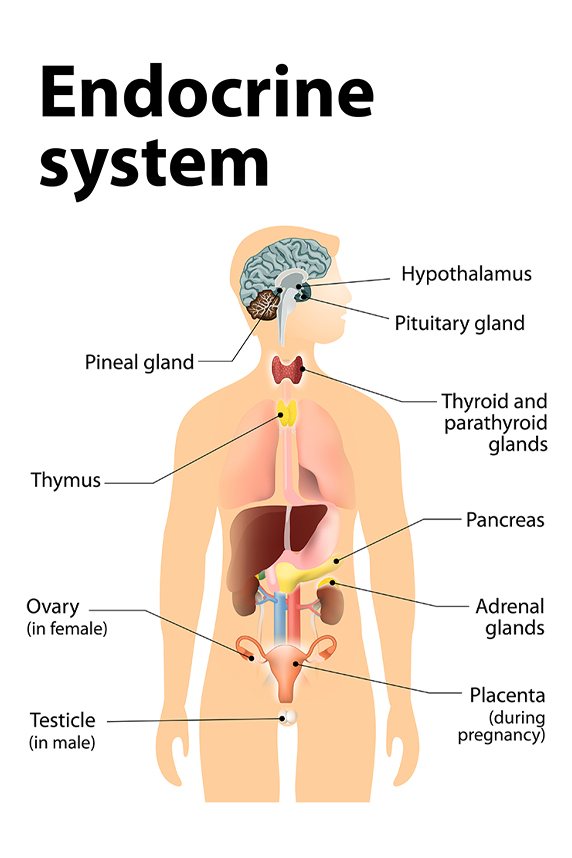
NIEHS researchers used a mouse model to uncover how exposure to endocrine-disrupting chemicals as a newborn could lead to endometrial cancer, and potentially breast cancer, in adulthood. Endocrine disruptors mimic, block, or interfere with hormones.
The scientists found that mice exposed to diethylstilbestrol (DES) immediately after birth — known as the neonatal period — experienced altered uterine cell differentiation and a higher rate of reproductive cancers later in life. Cell differentiation is a critical biological process whereby stem cells begin to mature into more distinct cell types with specific functions.
DES, which is a synthetic estrogen, was once prescribed to prevent miscarriage and other pregnancy complications. It is no longer used because it can increase risk of reproductive tract abnormalities and cancer in the daughters of women exposed during pregnancy. However, studying the developmental effects of DES is still relevant today because like many other endocrine disrupting-chemicals, it can change cell differentiation, according to the scientists. Their findings were published Oct. 19 in PLOS Biology.
Cutting-edge tech reveals key cellular changes

“This study is important because previously, scientists did not know how endocrine disruptors affected cell differentiation and caused cancer,” noted lead author Carmen Williams, M.D., Ph.D., deputy chief of the NIEHS Reproductive and Developmental Biology Laboratory. “Now, we have pinpointed a biological mechanism that can lead to that health outcome. Compared to the mice we studied, exposure levels in humans would likely need to be sustained for a much longer period for there to be similar health risks. We need to confirm through additional research, but I would still expect to see a subtle effect in humans. Future studies in this area will deepen our understanding of these risks and hopefully help new parents make informed decisions for themselves and their children.”
Using cutting-edge technology called single-cell RNA sequencing, the scientists showed how exposure to DES can affect cells lining the uterus, which are called epithelial cells. After exposure, the epithelial cells appeared normal, even though they were not. They behaved quite differently — more cancer-like — later in life when there was increased estrogen signaling, such as what occurs during a woman’s menstrual cycle, or following increased inflammation, which can result from obesity.
The researchers determined that neonatal exposure to DES alone did not cause endometrial cancer, but rather, such exposure paved the way for cancer if there was a second event in adulthood such as increased estrogen signaling or inflammation.

Insights into endocrine disruptors’ biological effects
“DES can be used to understand the effects of endocrine disruptors more broadly because many such chemicals are reported to change how cells differentiate and become adult tissues,” said co-author Wendy Jefferson, Ph.D., an NIEHS biologist. “Previous studies in mice showed that neonatal exposure to DES caused cancer, but they did not reveal how. That provided an opportunity for us to try to understand exactly what happens in early cell development to cause cancer in adulthood.”
According to the scientists, the study has implications for endometrial cancer and also breast cancer because both involve changes in cell differentiation that can be heavily influenced by early exposure to endocrine disruptors.
(Jesse Saffron, J.D., is Deputy Director of the NIEHS Office of Communications and Public Liaison.)









